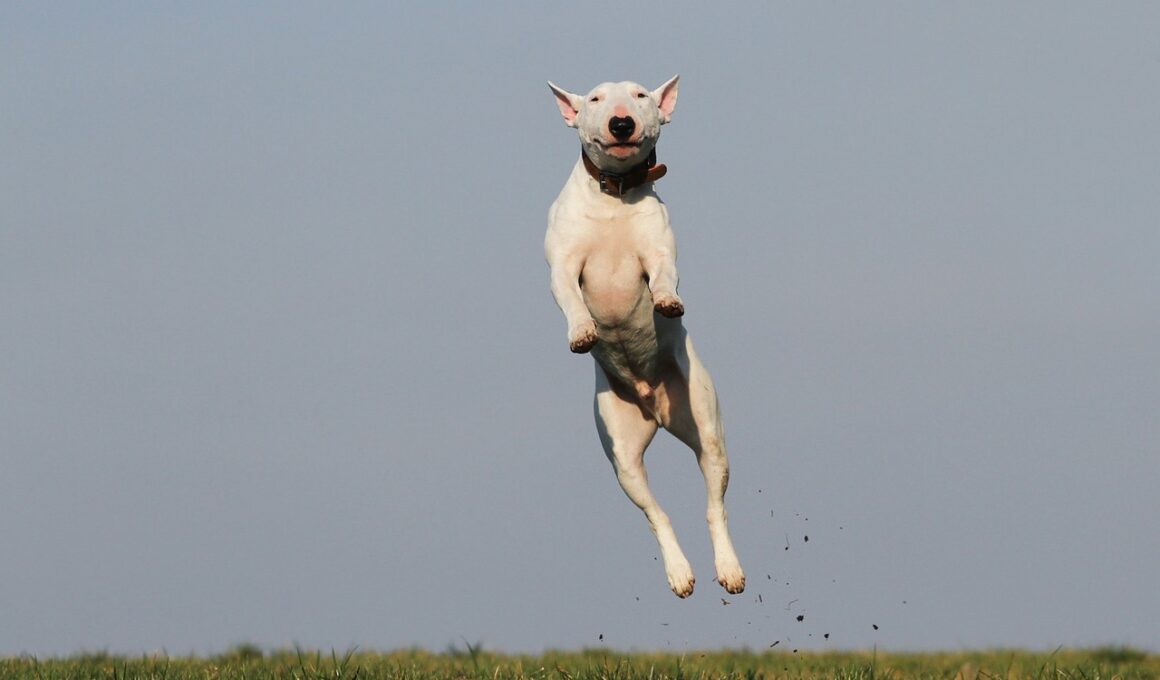The Role of Memory in Dog Learning and Training Methods
Understanding the role of memory in dog learning is crucial, as it directly influences how pets respond to training. Memory helps dogs retain commands, tricks, and behavioral cues. Dogs possess a different memory system than humans; they often rely on associative memory. This means they learn to associate certain actions with rewards or negative reinforcement. Associative learning is essential for dog training and provides the framework to effectively teach your canine companion. Explaining these principles to dog owners is vital for successful training. Owners need to remain patient, using consistent repetition and positive reinforcement techniques to solidify a dog’s memory of commands. Additionally, socializing with other dogs and people can enhance memory retention. Just like humans, dogs remember experiences that create lasting impressions. Therefore, training sessions should be varied and engaging. If the owner employs a predictable routine, dogs may lose interest or forget commands. Keeping training fresh and challenging encourages mental engagement. Thus, understanding memory and using it to an advantage plays a key role in how well dogs can learn new skills.
Memory is not only vital for learning commands but also affects behavioral patterns. When dogs repeat behaviors that lead to rewards, these actions become ingrained habits. A dog might learn that sitting yields treats, leading to its spontaneous repetition of the behavior. This repetitive action reinforces memory pathways, making it easier for the dog to recall the behavior in the future. Less desirable habits, such as barking excessively or digging, can also be solidified in a similar manner. Addressing these issues requires a different approach, focusing on redirecting the unwanted behavior through positive reinforcement of alternate actions. Hence, training should not be one-dimensional but rather a holistic approach. Engaging in diverse activities stimulates the dog’s memory and promotes a better learning experience. Owners can achieve this by varying the rewards or introducing new commands gradually. Consistently mixing training methods will keep the dog’s attention sharp and learning curve steep. Remember, dogs thrive on positive interactions and feedback. Providing praise, treats, or playtime after successful tasks enhances the overall training experience and strengthens the bond between the dog and owner.
Factors Influencing Dog Memory
Several factors influence memory retention in dogs, such as age, breed, and environmental conditions. A young dog tends to learn quicker due to a more adaptable brain. Puppies can absorb information rapidly, making training more effective in their critical learning period. Conversely, older dogs have established behavioral patterns, which might make it harder to learn new tricks. However, older dogs can still learn; it might take a bit more effort and time. Working with a dog’s natural instincts is crucial in determining how well it can remember commands. For example, herding breeds often have sharper memories related to tasks instinctively linked to their ancestral traits. Additionally, environmental factors play a significant role; distractions can hinder memory retention. Training in a calm, familiar space initially allows dogs to concentrate better. Gradually introducing distractions mimics real-world scenarios and prepares the dog for practical application of commands. Consistency in training sessions and setting realistic expectations is also fundamental. Providing ample practice opportunities while considering these factors will maximize the chances of successful learning and retention for your furry friend.
Utilizing varied training techniques can also significantly impact a dog’s memory. Methods like clicker training, verbal markers, and hand signals can enhance how information is encoded in a dog’s brain. For instance, clicker training utilizes sound to mark desired behaviors instantly, creating stronger memory associations. The sound of the click acts as a positive reinforcement tool that makes it easier for the dog to remember the action linked to it. This technique can be incredibly effective because it encourages immediate response from the dog, promoting quicker learning. Similarly, pairing verbal markers with specific commands can further elevate memory retention. Dogs begin to anticipate actions based on sound cues, which strengthens their understanding. Hand signals can work alongside verbal commands, harnessing visual memory pathways. Combining these cues allows for a multifaceted learning approach, increasing chances of successful communication between the owner and dog. This comprehensive understanding of various training techniques allows owners to adapt their methods based on their dog’s unique memory so they can reinforce training strategies that work best, while preventing the establishment of negative habits.
The Importance of Positive Reinforcement
Positive reinforcement remains one of the most effective approaches to training dogs. Offering rewards, such as treats or praise, reinforces desired behaviors resulting in persistent memory retention. When a dog learns that good behavior leads to positive outcomes, it creates a motivational framework that promotes eagerness to learn. Unlike negative reinforcement, which can induce anxiety and confusion, positive methods build a trusting relationship between owner and pet. This bond boosts the dog’s confidence, making it more willing to participate during training sessions. It is essential for pet owners to recognize their dog’s unique motivators, whether those include tasty treats, toys, or affection. While rewards are effective, timing them correctly is integral for maximizing memory retention. Immediate feedback following a desired behavior forms stronger connections in the dog’s memory. Consequently, an essential part of training routines is maintaining engagement through varied rewards. Frequent praise during training can keep the dog excited and attentive, allowing them to focus on the task. Positive reinforcement also makes training sessions enjoyable. Happy dogs are likely to be more responsive, leading to successful training outcomes.
Ultimately, training a dog effectively involves understanding their memory, psychology, and unique learning style. It is vital for pet owners to grasp how different factors influence memory retention and to tailor their training methods accordingly. Owners should remember that every dog is distinct; thus, techniques effective with one may not work with another. Paying attention to the dog’s reactions and adapting training methods is key to long-term success in learning. Sessions must be constructive yet fun, creating an enriching environment that encourages dogs to participate actively. Regular socialization with other dogs can also benefit their memory development. Engaging in playgroups exposes them to new learning opportunities while they practice their skills in a safe and supervised space. Moreover, building a routine while allowing flexibility fosters comfort. Dogs benefit most from training that feels consistent yet introduces new challenges in an enjoyable manner. Incorporating these suggestions into routine training ensures that dogs not only learn but retain these lessons. Thus, these combined efforts lead to a well-trained dog capable of responding reliably, ultimately enhancing the relationship between dog and owner.
Conclusion
In conclusion, understanding the role of memory in dog training is imperative for creating effective and long-lasting behavioral changes. By addressing the factors that influence memory retention, owners gain insights into their pets’ unique learning processes. The use of positive reinforcement, combined with varied techniques, enables owners to create tailored training experiences that support their dogs’ natural instincts. Engaging in consistent and enjoyable training sessions nurtures the bond between dog and owner, promoting a happy and responsive pet. Furthermore, considering age, breed, and learning style ensures that techniques match the individual dog. Whether through clear commands, positive feedback, or engaging training structures, all contribute to enhancing the learning experience. Memory is a powerful tool in shaping how well dogs learn and adapt to behaviors desired by their owners. As awareness grows around these principles, the potential for effective training expands, ultimately leading to a well-behaved companion. Training becomes less of a chore and more an enriching experience for both parties involved. Owners should commit to patience, consistency, and understanding, transforming the training process into a rewarding journey.


